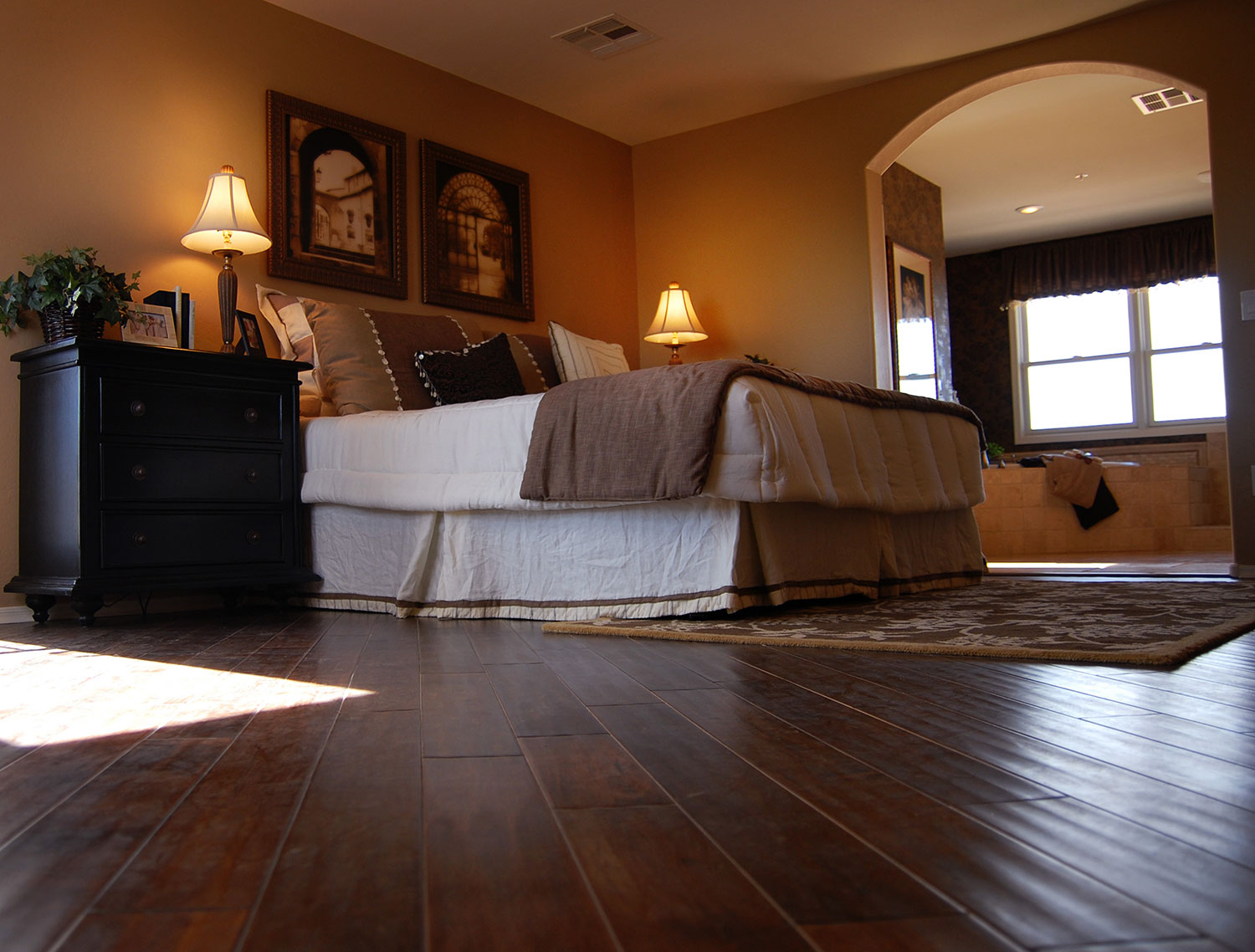
Cleaning tips for every floor
Whether you hire a professional floor cleaner or do the job yourself, the fact is, our floors need to be cleaned. They get dirty, attract scuffs and accumulate spills. But what kind of cleaner should you use for different types of floors?
Asphalt tile: Try to mop every week using 1 cup of fabric softener in half a pail of water. Don’t flood the floor, since excess water can loosen adhesives and grout. Remove marks with fine-grade steel wool and liquid floor wax. Rub clean, then wipe with a damp cloth.
Brick flooring: Since brick is porous, keep the surface sealed and waxed with a commercial sealer. Mop after vacuuming. Use 1 cup of vinegar mixed in water to make it shine. Use a solvent-based wax, and use a wax stripper and brush to remove buildup as needed. Don't use acids, strong soaps or abrasives.
Ceramic tile: Glazed ceramic is virtually stain proof; however, if it is unglazed, that means it's porous and will need to be sealed. Don’t use harsh abrasives, acids or strong soaps on unglazed ceramic. Mop with all-purpose cleaner, and dry with a soft cloth. Strip unglazed ceramic once a year and rinse thoroughly afterward.
Concrete: Since concrete is very porous, it stains easily. Prior to sealing with a commercial sealer, sweep up loose dirt, and clean with an all-purpose cleaner. Use kitty litter to absorb oil and grease on your garage floor. Spread with a stiff broom, working from the back of the garage to the front, and then wash clean using a garden hose. If you need to use a heavy-duty floor cleaner, apply with a sponge mop, rinse and allow to dry. Concrete floors can be kept clean easier if they are treated with an epoxy paint or other strong coating.
Flagstone and slate: Natural stone is rough and porous and should be sealed with a commercial sealer. Apply two thin coats of acrylic floor finish using a lamb’s wool pad, or apply paste with a floor polishing machine. Occasionally strip, rinse and reapply wax. Use a mop using either clear water, all-purpose cleaner or water with fabric softener.
Linoleum and vinyl: Prior to waxing, vacuum and mop, remove marks with a fine grade steel wool. Cleaning linoleum and vinyl floors is easy, but be careful of the products you use. Solvent-based products, scouring, flooding and using very hot water are all bad for linoleum. The fastest way to clean the floor is with a one-step cleaner or polish, but the best way is to mop with all-purpose cleaner.
Marble: Non-polished marble is very porous, so seal it with commercial sealer. Mop it with clear water and all-purpose cleaner. You can also use 1 cup fabric softener to ½ gallon water, and use a self-polishing liquid wax. Strip occasionally, rinse and reapply wax. You also can use water-based wax or paste wax. If using a paste, test in a corner of the room to make sure the paste won’t discolor the flooring.
Cleaning hardwood floors
Many vintage and restored homes have original hardwood floors made of oak, maple or exotic woods like Brazilian cherry. Bamboo and other hardwood alternatives have become popular in recent years because they are made from a renewable source.
These floors can be cleaned by a daily sweep with a dust mop. Once a week, they can be damp mopped with a quality, liquid soap. There are also some cleaners that have gentle detergents and oils in them that will protect the wood’s natural finish.
When mopping a wood floor, be careful not to get too much liquid on the floor at one time. Wood floors can be damaged by being overly saturated.
Floor maintenance
It is essential for homeowners and business owners to maintain their floors if they want to reduce the amount of money they spend on the repair, replacement and professional cleaning of their flooring. Here are some things to keep in mind:
Ease of maintenance: Simply put, some floors are easier to clean and maintain than others. Carpet needs far more attention than hard surfaces because it is easy for spills to stain carpet fibers. Dirt also gets ground into carpets quite easily. Hard surfaces such as tile and wood are simpler to clean because they do not easily stain, and they resist the damage that dirt can cause. Of these hard flooring options, wood is easier to maintain because, unlike most tiled floors, it does not have grout that can get stained.
Basic floor care products: A mop and a broom are a must for nearly anyone that has floors to clean. A vacuum will also be necessary if some or all of the flooring is carpeted. Spot cleaners will be needed for carpeted floors, and wax is required for wood floors.
Keeping floors clean: The first step in floor cleaning and maintenance is keeping the dirt away. Welcome mats should be placed at entrances so that people can scrape the dirt off their shoes before they enter. In some places, such as a home, there can even be a rule that people remove their shoes before entering. Immediately cleaning up spills, especially on carpet, also makes it less likely that dirt will get embedded in the flooring.
%20Logo%202018.png)